

Articles
How To Store Gouda Cheese
Modified: August 17, 2024
Discover the best articles on how to store Gouda cheese to keep it fresh and flavorful. Learn expert tips and techniques for preserving the quality of your favorite cheese.
(Many of the links in this article redirect to a specific reviewed product. Your purchase of these products through affiliate links helps to generate commission for Storables.com, at no extra cost. Learn more)
Introduction
Gouda cheese is a beloved Dutch cheese renowned for its rich, creamy texture and distinct flavor. Whether you’re a cheese connoisseur or simply enjoy the occasional cheese indulgence, knowing how to store Gouda cheese properly is essential to maintain its quality and extend its shelf life. In this article, we will explore the best practices for storing Gouda cheese and provide you with valuable tips and insights to ensure that your Gouda cheese stays fresh and flavorful.
Gouda cheese, named after the city of Gouda in the Netherlands, has a history dating back centuries. This semi-hard cheese is known for its smooth and supple texture, with flavors that range from mild and buttery to sharp and nutty, depending on its age. Gouda cheese is a versatile ingredient that can be enjoyed on its own, grated over dishes, or melted into a gooey and delicious fondue.
When it comes to storing Gouda cheese, maintaining the proper temperature and humidity levels is crucial. Improper storage can lead to texture and flavor degradation, resulting in a less enjoyable eating experience. Additionally, Gouda cheese has a tendency to absorb odors from its surroundings, so it’s essential to store it in a way that isolates it from other strong-smelling foods in your fridge or pantry.
In the following sections, we will delve into the specific steps and methods for storing Gouda cheese correctly. From selecting the right cheese to using the right storage containers, we’ve got you covered with comprehensive tips and advice. By following these guidelines, you’ll be able to enjoy your Gouda cheese at its best for an extended period. So, let’s dive in and discover how to store Gouda cheese like a pro.
Key Takeaways:
- Properly storing Gouda cheese is essential to maintain its rich flavor and texture. Choose the right cheese, prepare it for storage, and use suitable methods like wax paper wrapping or cheese storage containers to extend its shelf life.
- Avoid common mistakes in Gouda cheese storage, such as using plastic wrap, exposing it to strong odors, or storing it for excessively long periods. By following proper storage practices, you can ensure that your Gouda cheese remains fresh and flavorful.
Read more: How To Store Cream Cheese
Understanding Gouda Cheese
Before we delve into the intricacies of storing Gouda cheese, let’s take a moment to understand the unique characteristics of this beloved cheese. Gouda cheese is a semi-hard cheese that is made from cow’s milk and has a smooth and supple texture.
Gouda cheese is typically aged for different periods, ranging from a few weeks to several years. The aging process contributes to the development of distinct flavors and textures. Younger Gouda cheese is mild and creamy, with a subtle sweetness, while aged Gouda cheese has a more pronounced flavor, a crumbly texture, and complex nutty notes.
When selecting Gouda cheese for storage, consider your personal preferences. If you prefer a milder flavor and softer texture, opt for young Gouda cheese. If you enjoy a stronger flavor and a crumbly texture, aged Gouda cheese might be the perfect choice.
Gouda cheese is also available in various forms, including wheels, blocks, and slices. If you have a larger piece of Gouda cheese, you may need to take extra care when storing it to prevent it from drying out or becoming moldy.
In addition to the aging process and form, Gouda cheese is available in different varieties that can add unique flavors and textures. Some popular variations of Gouda cheese include smoked Gouda, which has a delightful smoky flavor, and herb-infused Gouda, which incorporates herbs like cumin or fenugreek for added complexity.
Understanding the specific characteristics and variations of Gouda cheese can help you make more informed decisions when it comes to storage and pairing with other foods. Whether you’re a fan of the classic young Gouda or enjoy the bold flavors of aged Gouda, knowing the basics of this cheese will enhance your overall cheese experience.
Now that we have a solid understanding of Gouda cheese, let’s move on to the next section, where we will explore how to select the right Gouda cheese for storage.
Selecting the Right Gouda Cheese
When it comes to storing Gouda cheese, selecting the right cheese is the first step towards ensuring its longevity and quality. Here are some tips to help you choose the ideal Gouda cheese for storage:
- Consider the age: Gouda cheese is available in various age ranges, from young to extra-aged. Young Gouda cheese is typically aged for just a few weeks and has a milder flavor, making it perfect for everyday snacking or melting. On the other hand, if you’re looking for more robust and complex flavors, opt for aged Gouda cheese, which is aged for several months or even years.
- Inspect the rind: Gouda cheese is often encased in a natural or wax rind. When selecting Gouda cheese, examine the rind for any signs of mold or cracking. A well-formed and intact rind indicates that the cheese has been properly cared for and is likely to have better shelf life.
- Check for moisture: Gouda cheese should have a slightly elastic and pliable texture. Avoid cheese that feels overly dry or crumbly, as it may indicate that it has been exposed to improper storage conditions.
- Consider personal preferences: Everyone’s taste preferences are different, so choose a Gouda cheese that aligns with your desired flavor profile. If you enjoy a milder taste, opt for young Gouda cheese, while those who prefer a more intense flavor might opt for aged Gouda cheese.
- Try different variations: Gouda cheese comes in various flavors and variations, such as smoked Gouda or herb-infused Gouda. Don’t be afraid to experiment and discover new flavors that pique your interest. However, keep in mind that flavored Gouda cheese may have slightly different storage requirements compared to the plain variety.
By taking these factors into consideration, you can choose a Gouda cheese that suits your taste preferences and is better suited for storage. Once you’ve found the perfect Gouda cheese, it’s time to prepare it for proper storage, which we’ll explore in the next section.
Preparing Gouda Cheese for Storage
Before you can store Gouda cheese, it’s important to ensure that it is properly prepared. Taking a few simple steps will help preserve the cheese’s quality and flavor during storage. Here’s how to prepare Gouda cheese for storage:
- Remove plastic wrapping: If your Gouda cheese comes in a plastic wrap or packaging, it’s essential to unwrap it. Plastic can trap moisture and promote the growth of mold, leading to spoilage. By removing the plastic, you allow the cheese to breathe and prevent unwanted moisture buildup.
- Trim any mold or drying: Inspect the cheese for any signs of mold or drying, especially around the edges or cut surfaces. If you find any mold, trim off the affected area with a clean knife. Make sure to cut about 1/4 inch (0.6 cm) beyond the visible mold to ensure its complete removal. If the cheese appears to be drying out, trim off that portion as well, as it can affect the texture and taste.
- Allow the cheese to come to room temperature: Before storing Gouda cheese, it is recommended to let it come to room temperature for about 30 minutes. This allows the cheese to breathe and remove any condensation that may have formed during refrigeration.
- Pat the cheese dry: Use a clean paper towel to gently pat the Gouda cheese dry. This step helps remove excess moisture on the surface, which can contribute to mold growth. Be gentle to avoid damaging the cheese’s delicate texture.
- Optional: Brush with olive oil or vinegar: To further protect the cheese and enhance its flavor, you can brush it with a thin layer of olive oil or vinegar. This adds a protective barrier and seals in moisture. It also imparts a subtle flavor that complements the cheese. However, this step is optional and may not be suitable for all storage methods.
By following these preparation steps, you are ensuring that your Gouda cheese is in optimal condition for storage. The next sections will focus on different methods of storing Gouda cheese, including using a refrigerator, cheese storage containers, and wax paper wrapping.
Storing Gouda Cheese in the Refrigerator
The refrigerator is the most common and convenient place to store Gouda cheese, as it helps maintain a consistently cool temperature to slow down the aging process and prevent spoilage. Here’s how to store Gouda cheese in the refrigerator:
- Wrap in wax paper: Take a sheet of wax paper and wrap the Gouda cheese snugly. The wax paper allows the cheese to breathe while protecting it from excess moisture and odors in the fridge.
- Place in a resealable bag: After wrapping the Gouda cheese in wax paper, transfer it to a resealable plastic bag or airtight container. This additional layer of protection helps further prevent moisture and odor transfer.
- Find a suitable spot: Locate a designated area in your refrigerator that maintains a consistent temperature, preferably between 35°F and 45°F (2°C and 7°C). Avoid storing the cheese in the door or near the freezer, as these areas may experience temperature fluctuations.
- Avoid direct contact with other foods: Gouda cheese has a tendency to absorb odors from other foods. To prevent this, make sure to separate it from strong-smelling foods like onions, garlic, and certain fruits and vegetables. If possible, store the cheese in a dedicated cheese drawer or in a sealed container.
- Check and replace the wax paper regularly: Over time, the wax paper may become damp or develop mold. It’s important to regularly check the condition of the wax paper and replace it if necessary. This helps ensure the cheese stays in good condition while stored.
- Use within a reasonable time frame: While Gouda cheese can be stored in the refrigerator for several weeks or even months, it is best consumed within a reasonable time frame. As the cheese ages, its texture and flavor may change. For optimal taste and quality, aim to consume Gouda cheese within one to two months of purchase.
By following these guidelines, you can effectively store Gouda cheese in the refrigerator and maintain its freshness for an extended period. However, if you’re looking for alternative methods that offer additional benefits, the next sections will explore using cheese storage containers and wax paper wrapping.
Read more: How To Store Cheese Danish
Using a Cheese Storage Container
If you’re a cheese enthusiast looking for a specialized way to store Gouda cheese, a cheese storage container can be a great investment. These containers are designed to create the ideal environment for storing cheese, providing the necessary humidity control and ventilation. Here’s how to effectively use a cheese storage container:
- Select a suitable cheese storage container: Look for a container specifically designed for cheese storage. These containers are often made of BPA-free plastic or ceramic and have a lid or cover that allows for proper ventilation.
- Prepare the container: Before placing the Gouda cheese in the container, make sure it is clean and dry. Remove any lingering odors from previous contents by washing it with mild soap and warm water. Rinse it thoroughly and allow it to air dry.
- Wrap the cheese: Take a sheet of wax paper or parchment paper and wrap the Gouda cheese. This helps protect the cheese from moisture loss and prevents it from sticking to the container.
- Place the wrapped cheese in the container: Carefully place the wrapped Gouda cheese into the cheese storage container. Make sure it fits snugly without any open spaces.
- Keep the container in the refrigerator: Find a designated spot in the refrigerator to store the cheese container. Aim for a consistent temperature of around 35°F to 45°F (2°C to 7°C).
- Check the humidity: Some cheese storage containers come with built-in humidity control features. If your container has this option, make sure to monitor and adjust the humidity level according to the specific needs of Gouda cheese. Generally, Gouda cheese benefits from a humidity level of around 85% to 95%.
- Maintain proper ventilation: Cheese needs proper air circulation to prevent excess moisture buildup. Ensure that the cheese storage container has ventilation holes or slots to allow for adequate airflow. This helps reduce the risk of mold growth and preserves the cheese’s quality.
- Regularly inspect and replace the wrapping: Check the condition of the wax paper or parchment paper regularly. Replace it if it becomes damp or develops mold. This helps keep the Gouda cheese fresh and free from unwanted flavors.
By using a cheese storage container, you can create an optimal environment for storing Gouda cheese. These containers help regulate humidity, protect the cheese from odors, and maintain proper ventilation. However, if you prefer a simpler method, the next section will explore using wax paper to wrap Gouda cheese for storage.
Store Gouda cheese in the refrigerator at 35-45°F (1-7°C) in its original packaging or wrapped in wax paper. Keep it away from strong-smelling foods to prevent absorption of odors.
Wrapping Gouda Cheese in Wax Paper
Another effective method for storing Gouda cheese is to wrap it in wax paper. Wax paper provides a breathable and protective barrier that helps maintain the cheese’s moisture levels while preventing it from drying out. Here’s how to wrap Gouda cheese in wax paper:
- Prepare the wax paper: Cut a piece of wax paper that is large enough to fully wrap the Gouda cheese. The wax paper should be approximately twice the size of the cheese to allow for proper wrapping.
- Place the cheese on the wax paper: Position the Gouda cheese in the center of the wax paper. Make sure it is aligned lengthwise with the longer side of the paper.
- Wrap the cheese: Fold one side of the wax paper over the cheese, covering it completely. Then, fold the other side of the wax paper to fully encase the cheese. Gently press down to secure the paper around the cheese, ensuring a snug fit.
- Twist the ends: To create a secure seal, twist both ends of the wax paper tightly. This helps to keep the cheese protected and maintain its shape.
- Label the wrapped cheese: Consider labeling the wrapped Gouda cheese with the date of purchase or the expiration date. This can be helpful for tracking its freshness and ensuring that you consume it within the recommended time frame.
- Store the wrapped cheese: Place the wrapped Gouda cheese in the refrigerator, preferably in a designated cheese drawer or in a spot with a consistent temperature between 35°F and 45°F (2°C and 7°C).
- Monitor the cheese’s condition: Regularly check the wrapped Gouda cheese for any signs of mold or drying. If you notice any issues, unwrap the cheese, trim off the affected part, and re-wrap it in fresh wax paper.
- Use within a reasonable time frame: While wax paper helps maintain the freshness of Gouda cheese, it’s still important to use the cheese within a reasonable time frame. Aim to consume the cheese within one to two months for optimal taste and quality.
By wrapping Gouda cheese in wax paper, you create a breathable and protective layer that helps preserve the cheese’s moisture and prevent it from absorbing unwanted flavors. This method is simple yet effective for storing Gouda cheese. However, if you’re looking for an alternative storage method, the next section will explore using a cheese vault.
Storing Gouda Cheese in a Cheese Vault
If you’re a cheese enthusiast looking for the ultimate storage solution for your Gouda cheese, a cheese vault might be just what you need. A cheese vault is a specialized container designed to create the perfect environment for cheese storage, ensuring optimal humidity and temperature control. Here’s how to store Gouda cheese in a cheese vault:
- Choose a suitable cheese vault: Look for a cheese vault specifically designed for storing cheese. These vaults are often made of materials like ceramic or wood, which help regulate humidity levels.
- Prepare the cheese vault: Before placing the Gouda cheese in the vault, make sure it is clean and dry. If the cheese vault has wooden shelves or compartments, wipe them down with a damp cloth to remove any dust or debris.
- Wrap the cheese: Take a sheet of wax paper or parchment paper and wrap the Gouda cheese. This helps protect the cheese from moisture loss and prevents it from sticking to the vault’s surfaces.
- Place the wrapped cheese in the vault: Gently place the wrapped Gouda cheese into the cheese vault. Ensure that it is properly positioned and not touching the sides or other pieces of cheese.
- Monitor and adjust the humidity: Cheese vaults often come with built-in humidity control features, such as ceramic stones or water reservoirs. Follow the manufacturer’s instructions to monitor and adjust the humidity level according to the specific needs of Gouda cheese. Generally, a humidity level of around 85% to 95% is ideal for storing Gouda cheese.
- Store in a cool place: Find a cool and dark spot to keep the cheese vault, away from direct sunlight and heat sources. Aim for a temperature of around 50°F to 55°F (10°C and 13°C) to maintain the cheese’s quality.
- Check the cheese regularly: Open the cheese vault occasionally to inspect the wrapped Gouda cheese. Look for any signs of mold or drying. If necessary, unwrap the cheese, trim off the affected part, replace the wax paper, and reposition it in the vault.
- Label the vault: Consider labeling the cheese vault with the date of storage or expiration to keep track of the cheese’s freshness and rotation.
- Enjoy at the desired ripeness: One advantage of using a cheese vault is the ability to control the aging process. With time, Gouda cheese develops more complex flavors and textures. Taste the cheese periodically to determine your preferred level of ripeness.
Storing Gouda cheese in a cheese vault allows for precise humidity and temperature control, creating the perfect conditions for aging and storing cheese. This method is ideal for cheese enthusiasts who want to have ultimate control over their Gouda cheese. However, if you prefer a simpler storage method, make sure to follow the guidelines for refrigerator or wax paper storage, as outlined in earlier sections.
Extending the Shelf Life of Gouda Cheese
Gouda cheese, like many other types of cheese, is a perishable food item that can spoil if not stored properly. However, there are several steps you can take to extend the shelf life of Gouda cheese and ensure that it stays fresh for as long as possible. Here are some tips to help you prolong the shelf life of your Gouda cheese:
- Buy fresh cheese: When purchasing Gouda cheese, opt for the freshest cheese available. Check the expiration date and choose a cheese with a longer shelf life to begin with.
- Handle with clean hands: Always handle Gouda cheese with clean hands or food-safe gloves to prevent the transfer of bacteria and contaminants.
- Store at the ideal temperature: Gouda cheese should be stored in a cool place with a consistent temperature. Aim to keep it between 35°F and 45°F (2°C and 7°C). Fluctuations in temperature can expedite spoilage.
- Control humidity: Maintaining the proper humidity level is key to preserving the freshness of Gouda cheese. Too much moisture can encourage mold growth, while too little can cause the cheese to dry out. Aim for a humidity level of around 85% to 95%.
- Avoid exposure to air: Oxygen exposure can cause the cheese to deteriorate and develop off-flavors. Wrap Gouda cheese tightly in wax paper or store it in an airtight container to minimize air contact.
- Prevent cross-contamination: Gouda cheese has a tendency to absorb odors from the surrounding environment. Store it separately from strong-smelling foods in order to prevent cross-contamination and preserve its true flavor.
- Regularly monitor and inspect the cheese: Check the Gouda cheese periodically for any signs of mold, drying, or changes in texture. If you notice any issues, promptly trim off the affected part and rewrap the cheese.
- Consume within a reasonable time frame: While Gouda cheese can be stored for a significant period, it is best consumed within a reasonable time frame to enjoy it at its peak flavor. Aim to consume Gouda cheese within one to two months of purchase.
- Freeze for long-term storage: If you’re unable to use Gouda cheese within the recommended time frame, consider freezing it. Wrap the cheese tightly in plastic wrap and aluminum foil, or place it in a freezer-safe container. Frozen Gouda cheese can be stored for up to six months, but it may undergo some texture changes upon thawing.
By following these guidelines, you can extend the shelf life of your Gouda cheese and enjoy it for a longer period. Proper storage and handling practices are crucial in maintaining the quality and flavor of the cheese. With these tips in mind, you can savor your Gouda cheese for an extended time without compromising its delicious taste.
Read more: How To Store Cheese In Freezer
Avoiding Common Mistakes in Gouda Cheese Storage
Proper storage is essential to maintain the quality and freshness of Gouda cheese. To avoid common mistakes that can lead to spoilage and flavor degradation, keep the following tips in mind when storing your Gouda cheese:
- Avoid storing Gouda cheese in plastic wrap: Plastic wrap can trap moisture, leading to a damp environment that promotes mold growth. Remove the cheese from its original plastic wrapping and opt for wax paper or parchment paper instead.
- Don’t store Gouda cheese in the refrigerator door: The refrigerator door is often subject to temperature fluctuations, which can impact the cheese’s quality. Instead, store Gouda cheese in the main section of the refrigerator, where the temperature is more consistent.
- Avoid storing Gouda cheese near strong-smelling foods: Gouda cheese is particularly susceptible to absorbing odors from other foods. Keep it away from items like onions, garlic, and certain fruits and vegetables to prevent unwanted flavors from contaminating the cheese.
- Don’t store Gouda cheese uncovered: Leaving Gouda cheese uncovered in the refrigerator can lead to drying and loss of moisture. Properly wrap the cheese in wax paper or store it in an airtight container to maintain its moisture content.
- Don’t freeze Gouda cheese without proper packaging: Freezing Gouda cheese without proper packaging can result in freezer burn and texture changes. Always wrap the cheese tightly in plastic wrap and aluminum foil or use a freezer-safe container before freezing.
- Avoid excessive handling: Excessive handling can transfer bacteria and affect the cheese’s shelf life. Handle Gouda cheese with clean hands or food-safe gloves to minimize the risk of contamination.
- Don’t store Gouda cheese for an excessively long time: While Gouda cheese can be stored for several weeks or even months, it is best consumed within a reasonable time frame. As the cheese ages, its texture and flavor can change, so aim to enjoy Gouda cheese within one to two months of purchase.
- Avoid storing Gouda cheese at room temperature for extended periods: Gouda cheese should be refrigerated to maintain its quality. Leaving it at room temperature for extended periods can accelerate spoilage and increase the risk of bacterial growth.
- Don’t use airtight plastic bags: While airtight containers are suitable for storing many food items, Gouda cheese needs some air circulation to prevent excessive moisture buildup. Use wax paper or parchment paper, along with breathable containers, to ensure the cheese stays fresh.
- Avoid abrupt temperature changes: Rapid temperature changes can cause condensation on the surface of Gouda cheese, leading to moisture buildup. Avoid placing the cheese in environments with drastic temperature fluctuations.
By avoiding these common mistakes, you can ensure that your Gouda cheese remains fresh, flavorful, and safe to consume. Proper storage practices are essential in preserving the quality and taste of this delicious cheese.
Conclusion
Storing Gouda cheese properly is the key to preserving its quality, flavor, and texture. Whether you’re an occasional cheese lover or a true cheese aficionado, following the right storage techniques will ensure that your Gouda cheese stays fresh and delicious for an extended period.
Understanding the unique characteristics of Gouda cheese, such as its rich texture and distinct flavor, is the first step in selecting the right cheese for storage. Consider factors like age, rind condition, and personal preferences when choosing the perfect Gouda cheese.
Preparing Gouda cheese for storage is crucial in maintaining its freshness. Remove plastic wrap, trim any mold or drying, and allow the cheese to come to room temperature before wrapping it in wax paper or parchment paper.
There are various methods for storing Gouda cheese, including using the refrigerator, cheese storage containers, or wax paper wrapping. Each method offers different benefits, so choose the one that fits your needs and available resources.
By implementing proper storage techniques, such as wrapping in wax paper, using cheese storage containers, or even opting for a cheese vault, you can create an ideal environment to protect and maximize the shelf life of Gouda cheese.
Remember to monitor the cheese regularly, check for any signs of mold or drying, and make adjustments as needed. Avoid common mistakes like storing in plastic wrap, exposing the cheese to air or strong odors, and keeping it for an excessively long time.
Ultimately, by following the guidelines outlined in this article, you can savor the unique flavors and textures of Gouda cheese for an extended period. So go ahead, indulge in this delicious Dutch cheese, and enjoy the rich flavors it has to offer.
Frequently Asked Questions about How To Store Gouda Cheese
Was this page helpful?
At Storables.com, we guarantee accurate and reliable information. Our content, validated by Expert Board Contributors, is crafted following stringent Editorial Policies. We're committed to providing you with well-researched, expert-backed insights for all your informational needs.

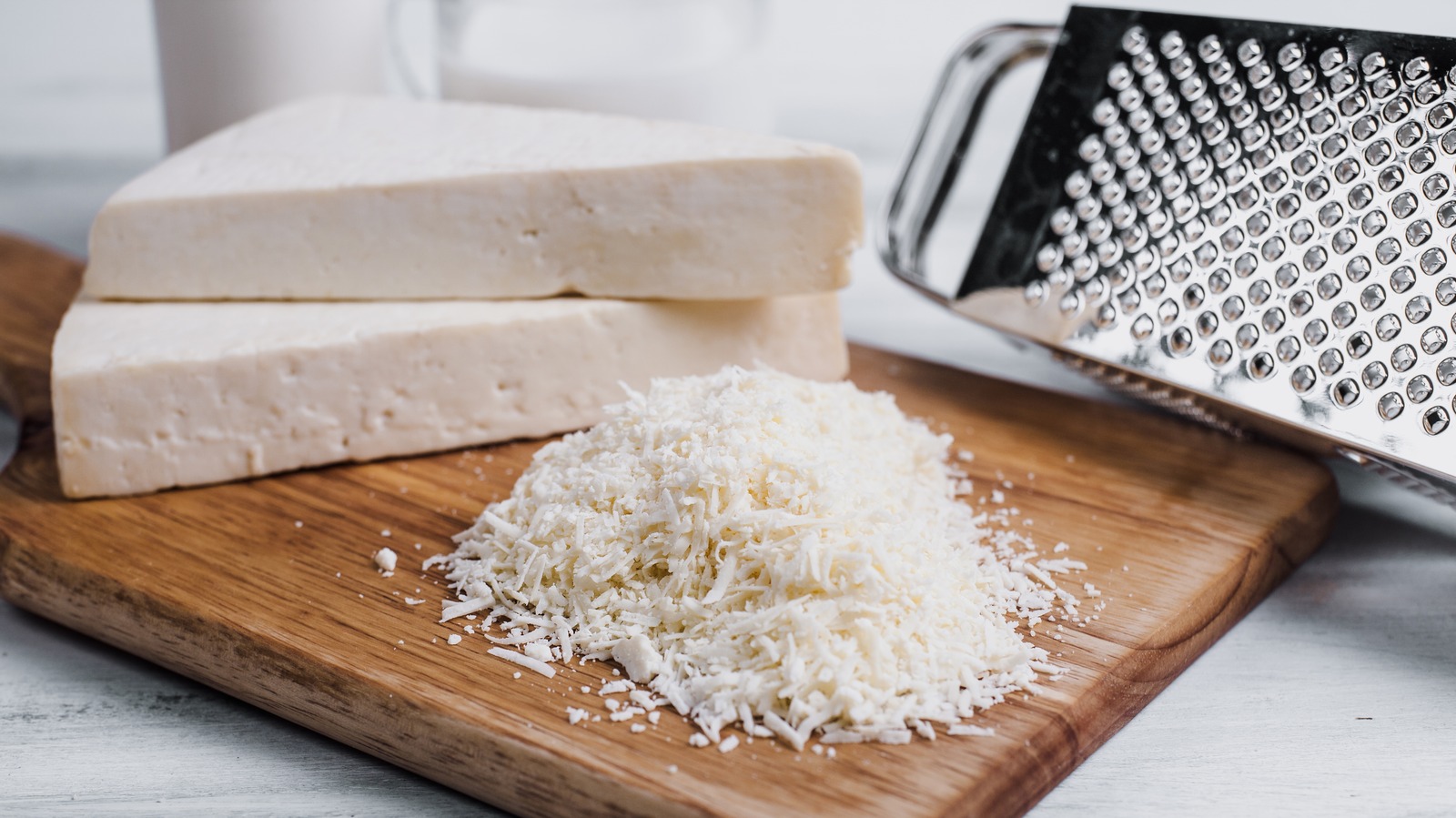
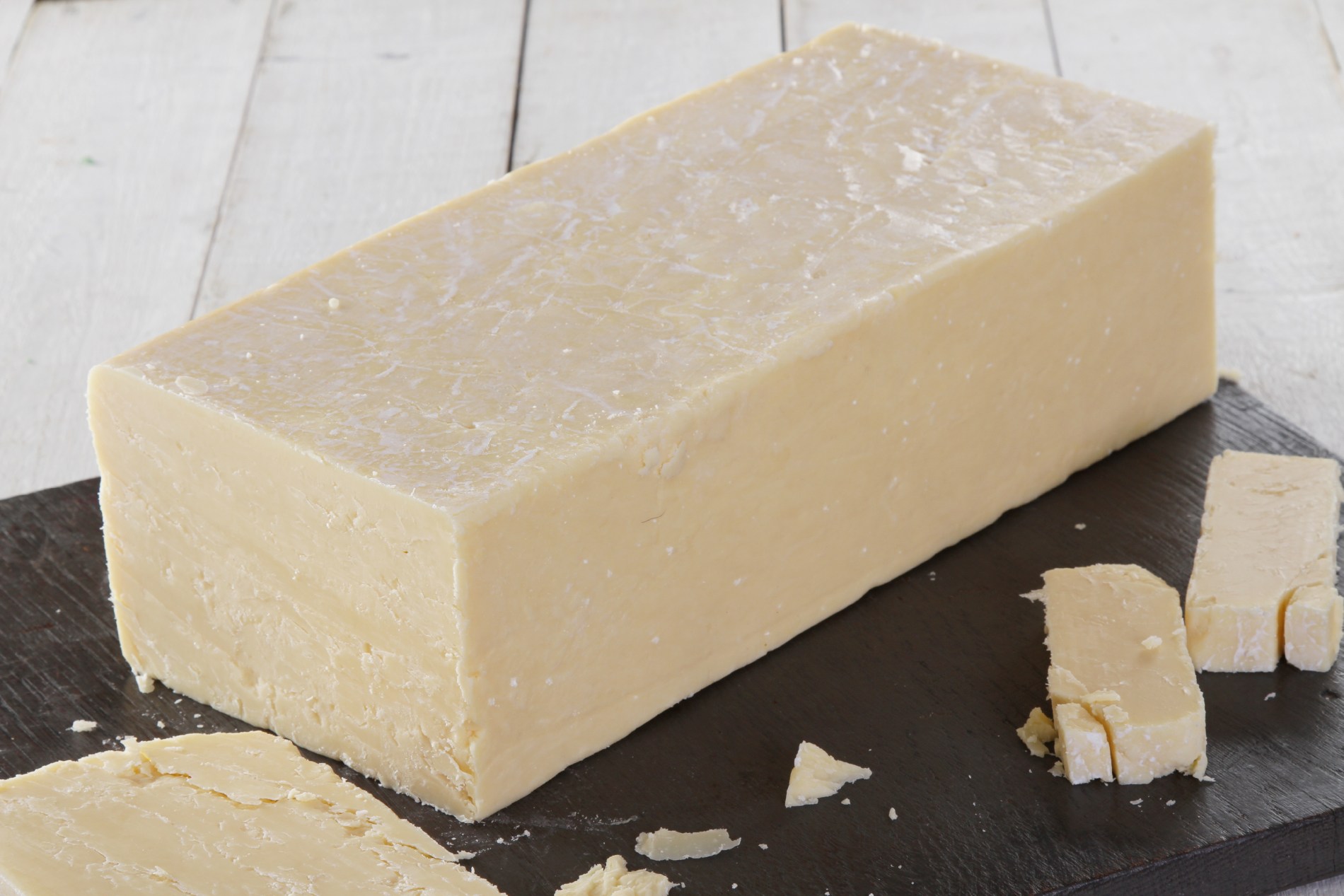



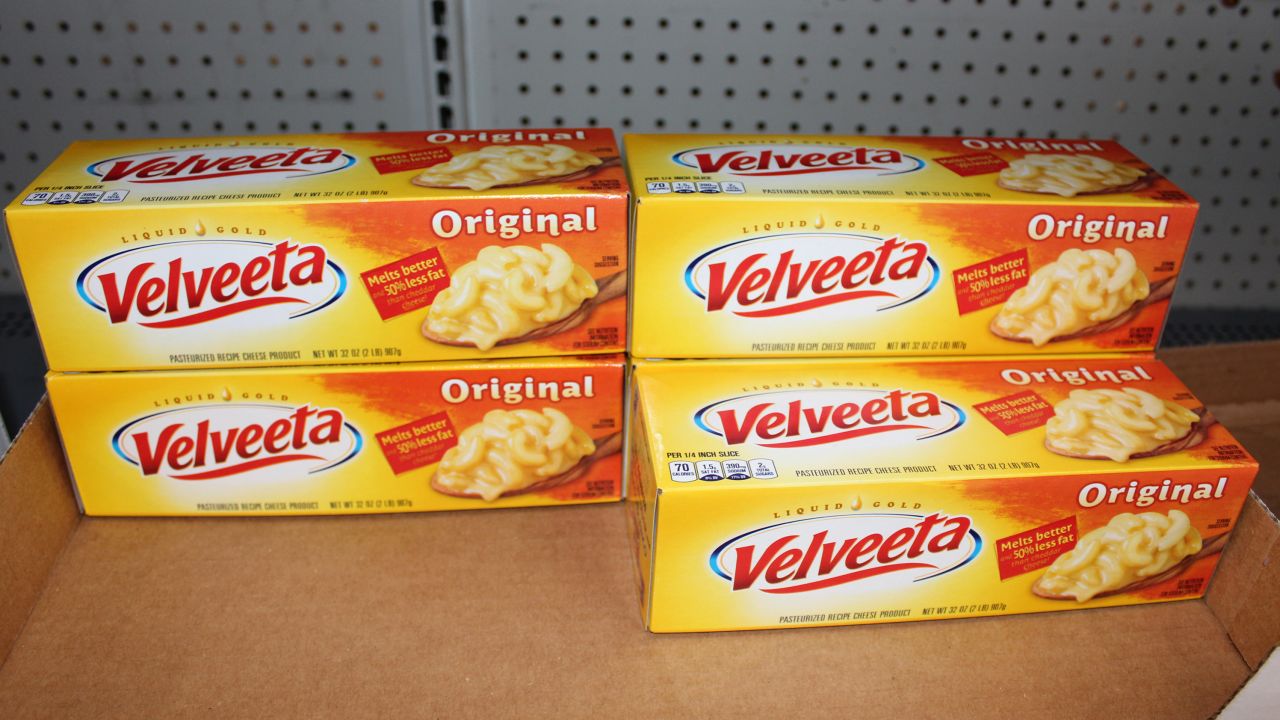

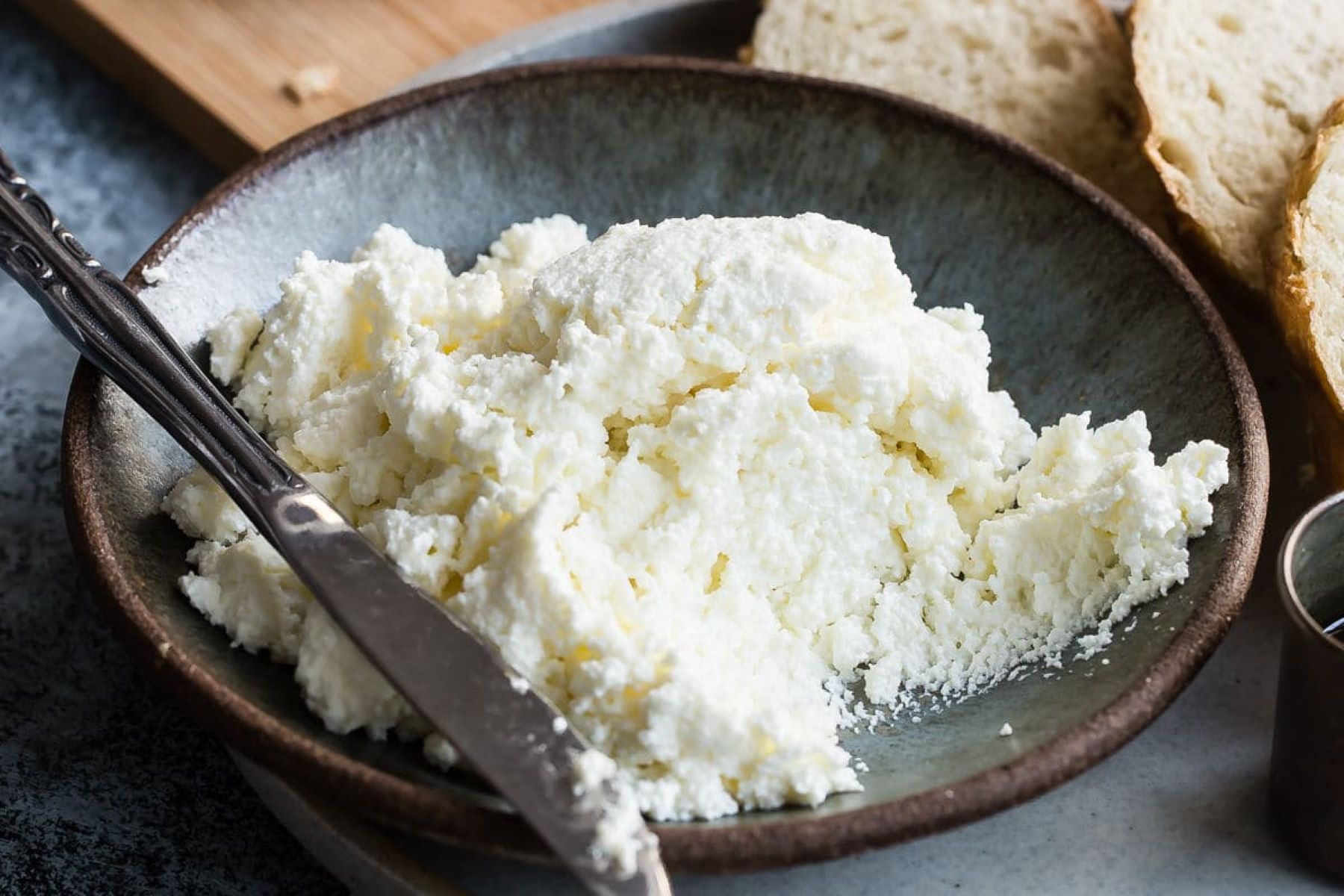
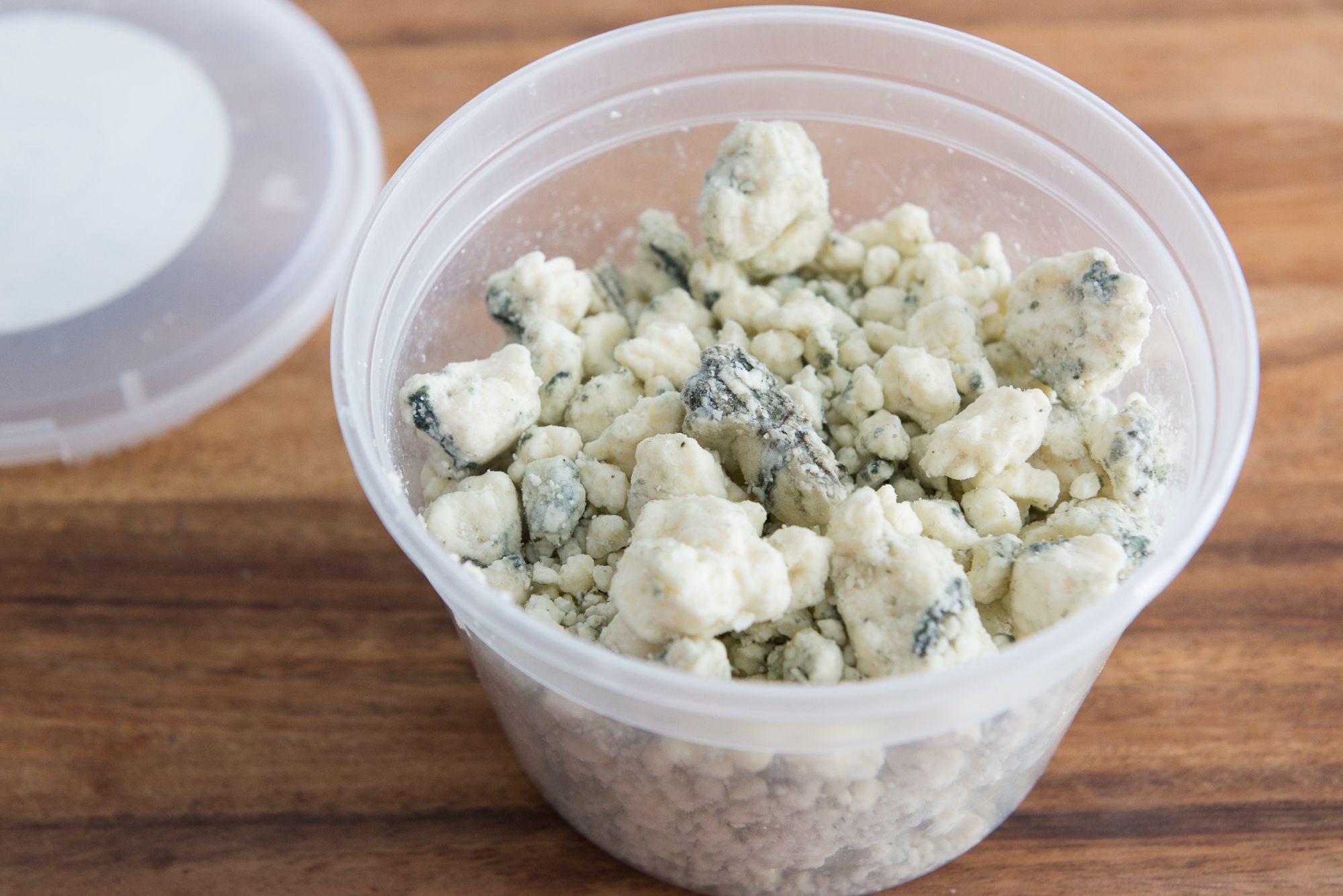




0 thoughts on “How To Store Gouda Cheese”